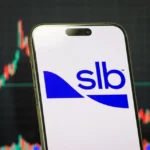What is ADA Cardano?
ADA Cardano represents a significant innovation in the realm of blockchain technology. Launched in 2017 by Input Output Hong Kong (IOHK), Cardano aims to provide a more secure and scalable platform for the development of decentralized applications and smart contracts. ADA, named after the mathematician Ada Lovelace, serves as the native cryptocurrency of the Cardano platform. Its role is crucial as it enables network transactions, powers the smart contracts, and facilitates governance within the ecosystem.
At the core of Cardano lies its unique proof-of-stake consensus mechanism known as Ouroboros. Unlike traditional proof-of-work systems that rely on energy-intensive mining processes, Ouroboros allows ADA holders to participate in the validation of transactions based on the amount of cryptocurrency they own. This approach not only enhances energy efficiency but also increases the accessibility of the blockchain to a wider audience. By incentivizing more participants to engage in the network, Cardano ensures higher security and decentralization.
Cardano distinguishes itself through a research-driven approach to development. The platform has undergone rigorous academic scrutiny involving peer-reviewed research before deployment. This meticulous process equips the platform with robust features destined to address myriad issues faced by earlier blockchain technologies, such as scalability, interoperability, and sustainability. The intention is to create a more reliable and efficient blockchain ecosystem that can evolve through incremental updates without compromising its foundational integrity.
In summary, ADA Cardano emerges not merely as a cryptocurrency but as a cornerstone of the evolving decentralized finance landscape. Its innovative consensus mechanism, commitment to research, and transparency pave the way for future advancements in blockchain technology, setting a new standard in the industry.
The Technical Architecture Behind Cardano
Cardano operates on a unique technical architecture that promotes scalability, security, and flexibility within its decentralized finance ecosystem. At its core, ADA Cardano is structured in two distinct layers: the Cardano Settlement Layer (CSL) and the Cardano Computation Layer (CCL). Each of these layers serves a pivotal role in how transactions are processed and smart contracts are executed.
The Cardano Settlement Layer is primarily responsible for facilitating peer-to-peer transactions involving ADA. This layer ensures that all transactions are thoroughly validated and recorded on the blockchain, creating a reliable ledger that users can trust. By separating the settlement layer from the computation layer, Cardano is able to enhance its transactional efficiency. The CSL’s design allows for rapid transaction processing, which is crucial in today’s fast-paced digital economy where speed and efficiency are paramount.
The second component of ADA Cardano’s architecture, the Cardano Computation Layer, focuses on executing smart contracts and applications. It provides an environment for developers to build and deploy decentralized applications without compromising the security of the underlying settlement layer. By compartmentalizing these functions, Cardano accommodates a wide variety of applications and use cases, enhancing its overall utility in decentralized finance.
Underlying these layers is the Ouroboros protocol, an innovative proof-of-stake consensus mechanism that secures the network. Ouroboros allows ADA Cardano to achieve a decentralized framework while maintaining low energy consumption compared to traditional proof-of-work systems. This sustainable approach not only contributes to the overall security of the network but also aligns with the growing need for environmentally-friendly blockchain technologies. By leveraging a proof-of-stake system, Cardano is equipped to scale effectively while ensuring robust user security.
Real-World Applications of ADA Cardano
ADA Cardano is revolutionizing various industries through its unique blockchain technology. One of the most prominent applications is in decentralized finance (DeFi), where Cardano enables financial transactions without the need for intermediary institutions. This allows users to lend, borrow, and trade assets in a more flexible and efficient manner. Projects built on the Cardano platform, such as decentralized exchanges and yield farming protocols, streamline these processes, providing lower fees and greater accessibility to a broader audience.
Another significant application of ADA Cardano is in identity verification. Cardano’s blockchain provides a secure and transparent way to store and verify identities, which is crucial for various sectors including finance, healthcare, and education. For instance, organizations can utilize Cardano’s technology to prevent identity fraud and manage sensitive information securely. This enhances user trust while simplifying the verification process, thus reducing operational costs for businesses.
Additionally, ADA Cardano has the potential to transform supply chain management. By leveraging the blockchain, businesses can track the provenance of their products and ensure compliance with regulations. This level of transparency not only fosters customer trust but also helps in minimizing losses due to counterfeiting. Various companies are already integrating Cardano into their supply chain processes to achieve these goals, resulting in increased efficiency and accountability.
Cardano is making significant strides in regions with limited access to traditional banking services. Through initiatives that facilitate peer-to-peer transactions and financial inclusion, ADA is empowering individuals who previously had no access to banking infrastructure. This not only aids in improving economic conditions but also demonstrates how blockchain technology can create solutions that benefit global populations. As these real-world applications continue to evolve, it is evident that ADA Cardano is not only a cryptocurrency but also a catalyst for positive change across industries.
The Future of ADA Cardano: Trends and Developments
As we look ahead, the future of ADA Cardano appears promising, with numerous trends and developments on the horizon that could significantly shape its trajectory. One notable area of growth is the anticipated technological advancements within the Cardano ecosystem. The platform’s unique Ouroboros proof-of-stake consensus mechanism is already recognized for its energy efficiency and scalability, positioning ADA Cardano favorably compared to its competitors. Upcoming upgrades, particularly the implementation of smart contracts and decentralized applications (dApps), are expected to enhance the platform’s capabilities, providing developers with robust tools to create innovative solutions.
Moreover, the Cardano roadmap outlines several critical updates, including the continuous improvement of its governance model. By empowering ADA holders to participate actively in decision-making processes, the network is likely to foster a more engaged community. This decentralized approach not only strengthens the ecosystem but also promotes transparency and trust among users, encouraging broader adoption and enhancing the platform’s reputation in the cryptocurrency space.
The potential impact of these developments extends beyond just the Cardano network. As ADA Cardano matures and attracts more users, it may drive increased investment and interest in the decentralized finance (DeFi) sector. This could lead to a ripple effect, influencing other cryptocurrencies and blockchain technologies to follow suit in adopting similar advancements. Ultimately, as the mainstream monetary system evolves, the acceptance of cryptocurrencies like ADA may enhance, further solidifying Cardano’s role within the financial landscape.
In conclusion, the future of ADA Cardano is poised for significant evolution, marked by innovative technological improvements and an expanding user base. As developments unfold, they are likely to enhance the usability of ADA, making it a cornerstone in fostering broader mainstream acceptance of cryptocurrency.



